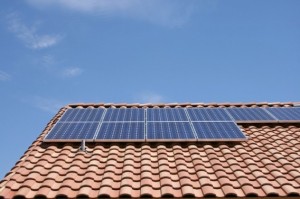
This is a revealing study. Apparently, homeowners are more likely to install solar panels if they already exist in their own zip code area or on their street. The study, called Peer Effects in the Diffusion of Solar Photovoltaic Panels, was carried out at the Yale School of Forestry & Environmental Studies and New York University Stern School of Business.
To arrive at this conclusion, the researchers looked at clusters of solar installations throughout California between January 2001 and December 2011 and realized that when solar panels were installed in one area, other people in the same area were more likely to follow suit.
The authors used data from the 10-year rebate program established by the $3.3 bn California Public Utilities Commision in 2006. At the time there were 85,046 requests. The result of the program was 3,000 megawatts of new installed solar power over the ensuing decade, with solar installations soaring from fewer than 1,000 in 2001 to more than 17,000 a decade later.
They estimated that 10 extra installations in a zip code increase the probability of an adoption by 7.8 percent. If there is a 10 percent increase in the total number of people with solar panels in a zip code (what they call the “installed baseâ€), there will be a 54 percent increase in the adoption of solar panels.
“We looked at the influence that the number of cumulative adoptions—the number of people who already installed solar panels in a zip code—had on the probability there would be a new adoption in that zip code,” said Kenneth Gillingham, the study’s co-author and assistant professor of economics at Yale School of Forestry & Environmental Studies. “Our approach controls for a variety of other possible explanations, including clustering of environmental preferences or marketing activity.”
Word of mouth also plays a role and the researchers believe that if one person tells their neighbor about savings achieved with solar power, they are likely to get excited about it. There’s also the keeping-up-with-the-joneses effect to be taken into account.
In terms of demographics, white males aged 45 to 65 who have a 30-minute commute and home were found to be the most likely to adopt.
The researchers believe their findings can help marketers working to reduce upfront costs of solar photovoltaic systems.
Please follow the link to download the report.
(Via Phys)





